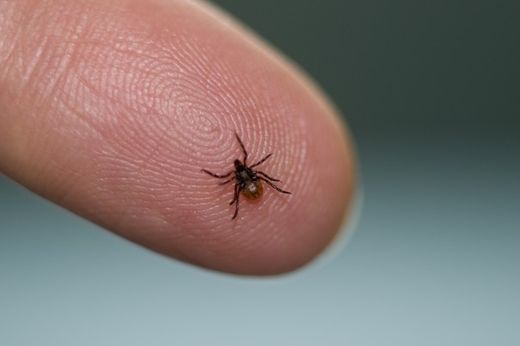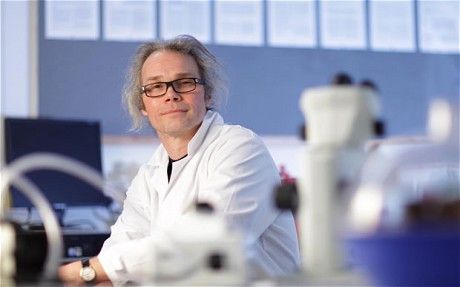
© Lauree Feldman/GETTY IMAGES Deer ticks, which can be as small as poppy seeds, transmit Lyme disease
I don't believe in the Loch Ness monster. I don't think government scientists are autopsying aliens in Area 51 or plotting a vast conspiracy from a bunker at the North Pole. But for the past two years, I've lived through an experience that has felt, at times, like a real-life episode of "The X-Files."
What happened is this: My husband became frighteningly, mysteriously ill. And when two doctors finally fit the puzzle pieces of his symptoms together, we discovered that, according to medical authorities, his disease does not officially exist.
Pat's symptoms came on gradually - so gradually, it took us years to realize he was sick. Longtime hikers, in 2008 we backpacked through Washington state for five days, lugging 45-pound packs over rugged mountain passes rippling with wildflowers.
"This seems a lot harder than it usually does," Pat remarked one day, taking an uncharacteristic rest break halfway up a hill. Then his muscles began to stiffen up after long car rides. In 2009 his usual runs on the treadmill became too taxing. By June of 2010 Pat couldn't make it to the gym at all. He was so tired, he needed a two-hour nap every night after work. One night he got home an hour late: He'd forgotten the name of our Metro stop and had kept riding the trains back and forth until he remembered.
Guessing that, at age 49, his problem might be hormonal, Pat made an appointment with an endocrinologist. While he waited six weeks for the appointment, he started wearing wool socks to bed because his feet were now inexplicably freezing. He began to stumble when walking, occasionally bumping into walls. The joint pain started up a few weeks later: a feeling of electrical shocks shooting through his knees and elbows. Numbness in his hands began making it hard to type. He'd sometimes choke while drinking and stumble over words.
When Pat finally saw the endocrinologist, the doctor confidently dismissed the odd array of symptoms as impossible. "The mind is very powerful," he explained.

